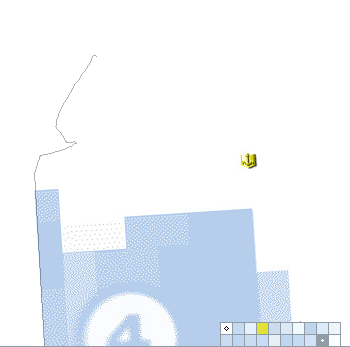Less than a day ago, Design Observer posted an open letter from several past AIGA presidents, medalists, and board members to the AIGA and its current board. I hope you will read it. The letter concerns the proposed sale of the AIGA national “headquarters” building and a campaign which pits a characterized old static mindset (“status quo”) with a new and seemingly current, relevant way forward (“transformative”). Read language from AIGA to members.
Of the many issues, here are a couple. First, there are perspectives of what the building allows given its location and street-level access for those to easily look in and maybe learn something about graphic design. It is accessible and hopefully functions to both educate and inform. Some who have replied to the letter have noted that the AIGA HQ could be located in Washington DC or distributed among several cites—either permanently or within a more fluid model that would allow it and its engagement to move around, be more involved in several communities directly.
It has also been mentioned that it could reside on a university campus to be directly connected to students, the physical resources of a university, and the events, research, and full activities of a learning environment. One of the reasons UGA is appealing for students and faculty is that it has invested in locating the Georgia Museum of Art with the performing and fine arts programs. It is a great asset to you all for the GMA to be so close and I hope you take advantage of it weekly!
Probably the most important issue to be raised is the strategic plan for the organization. AIGA and its members have struggled to hold a meaningful and inclusive definition of what AIGA’s mission should be or is. With the radical changes in graphic design over the last 20 years and the expansion of specialization within it and around it, this has been no easy task. In the past, there have been splits along a couple of lines—one between new and old media and another mirroring this media split but going deeper into the validating/“justifying” design processes that consider fuller contexts of use, appropriateness, function, research, environment, value. Yesterday I spoke with one of the senior groups about those who purport holistic approaches to design and context but are very quick to distance themselves from fashion.* If a holism, then a holism, no? We love to edit as much as we like our static and coveted locations or our need for familiar (read: comfortable) definitions of what it is we do and who we are. Safety first for us humans—even in the “creative” cliques.
AIGA kept the acronym but tossed out its original focus when it newly qualified AIGA as “the professional organization for design” and not “American Institute of Graphic Arts.” This was done in part to respond to the expanding ways people read and watch words and images. In all of this, I ask why we as designers and design students cannot move from a binary way of thinking—it is either this or it is that. In the case of media and context, it has been decided for us. There is no choice no matter how begrudgingly we do not like the new landscape nor how befuddled we feel by it. The people have spoken for good or ill. It is both/and, not either/or.
It is page and display, fast and slow, high and low, here and there if we like it or not. If we find comfort or validation in what we do, know, make, value, and advocate or not.
––––––––––––––––––––––––––––––
* I am not suggesting one do/design everything nor provide a depth of study in every mode of design. That is not the point. However, when we claim a holism, there is a responsibility to consider the full range of design activities, cultures, disciplines, mindsets, forces, economies, values and their place within the whole. Also, when it is our place to deal in definition, form, and presentation of our ideas, we must be aware of the contradictions we so easily expose. A quickness to define what one is not when one claims holism, is the immediate point where ethos is blown. And further in this line of definition, what choice is there between “status quo” and “innovation” — really? We can do better than divisive binaries or non-choice.


I always found it interesting that we are so set on binaries in our society, even beyond the world of design. Our desire for such strict organization inhibits us from experiencing all the variations found in life. If we only have to pick from two options, then we don‘t have to explore/experiment with the infinite amounts of other options. Society probably just wants the easy way out, not too many people think these days. Hopefully we can move towards a place where more people are encouraged to work with different processes to find many solutions. Would make things a lot more interesting than “this/that”.